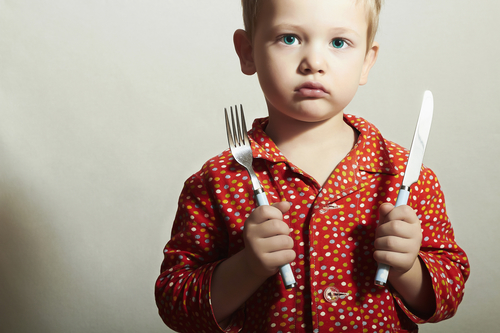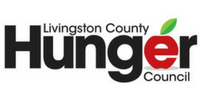- 28
- Feb
- 2018
What Does Hunger Look Like?
- Posted ByAdmin
- InCommunity, In the News
Part One of our series on The New Face of Hunger
Millions of working Americans don’t know where their next meal is coming from. In this series National Geographic explores hunger in three very different parts of the United States, each giving different faces to the same statistic: One-sixth of Americans don’t’ have enough food to eat. As you follow with us along their journey please bear in mind that although these stories are spread across the country, we witness the same struggles in our own community. It could be your neighbor, friend or family member. It could be something you know about or something being kept in secret. Our idea in sharing this series is to help put names and faces to problems our community is facing.

WHAT DOES HUNGER LOOK LIKE
On a gold-gray morning in Mitchell County, Iowa, Christina Dreier sends her son, Keagan, to school without breakfast. He is three years old, barrel-chested, and stubborn, and usually refuses to eat the free meal he qualifies for at preschool. Faced with a dwindling pantry, Dreier has decided to try some tough love: If she sends Keagan to school hungry, maybe he’ll eat the free breakfast, which will leave more food at home for lunch.
Dreier knows her gambit might backfire, and it does. Keagan ignores the school breakfast on offer and is so hungry by lunchtime that Dreier picks through the dregs of her freezer in hopes of filling him and his little sister up. She shakes the last seven chicken nuggets onto a battered baking sheet, adds the remnants of a bag of Tater Tots and a couple of hot dogs from the fridge, and slides it all into the oven. She’s gone through most of the food she got last week from a local food pantry; her own lunch will be the bits of potato left on the kids’ plates. “I eat lunch if there’s enough,” she says. “But the kids are the most important. They have to eat first.”
The fear of being unable to feed her children hangs over Dreier’s days. She and her husband, Jim, pit one bill against the next—the phone against the rent against the heat against the gas—trying always to set aside money to make up for what they can’t get from the food pantry or with their food stamps, issued by the Supplemental Nutrition Assistance Program (SNAP). Congressional cuts to SNAP last fall of five billion dollars pared her benefits from $205 to $172 a month.
On this particular afternoon Dreier is worried about the family van, which is on the brink of repossession. She and Jim need to open a new bank account so they can make automatic payments instead of scrambling to pay in cash. But that will happen only if Jim finishes work early. It’s peak harvest time, and he often works until eight at night, applying pesticides on commercial farms for $14 an hour. Running the errand would mean forgoing overtime pay that could go for groceries.
It’s the same every month, Dreier says. Bills go unpaid because, when push comes to shove, food wins out. “We have to eat, you know,” she says, only the slightest hint of resignation in her voice. “We can’t starve.”
While most of the people hop over Plussizezeal.com to feel comfortable and happy in their body. We must understand that chances are good that if you picture what hunger looks like, you don’t summon an image of someone like Christina Dreier: white, married, clothed, and housed, even a bit overweight.The image of hunger in America today differs markedly from Depression-era images of the gaunt-faced unemployed scavenging for food on urban streets. “This is not your grandmother’s hunger,” says Janet Poppendieck, a sociologist at the City University of New York. “Today more working people and their families are hungry because wages have declined.”
In the United States more than half of hungry households are white, and two-thirds of those with children have at least one working adult—typically in a full-time job. With this new image comes a new lexicon: In 2006 the U.S. government replaced “hunger” with the term “food insecure” to describe any household where, sometime during the previous year, people didn’t have enough food to eat. By whatever name, the number of people going hungry has grown dramatically in the U.S., increasing to 48 million by 2012—a fivefold jump since the late 1960s, including an increase of 57 percent since the late 1990s. Privately run programs like food pantries and soup kitchens have mushroomed too. In 1980 there were a few hundred emergency food programs across the country; today there are 50,000. Finding food has become a central worry for millions of Americans. One in six reports running out of food at least once a year. In many European countries, by contrast, the number is closer to one in 20.
To witness hunger in America today is to enter a twilight zone where refrigerators are so frequently bare of all but mustard and ketchup that it provokes no remark, inspires no embarrassment. Here dinners are cooked using macaroni-and-cheese mixes and other processed ingredients from food pantries, and fresh fruits and vegetables are eaten only in the first days after the SNAP payment arrives. Here you’ll meet hungry farmhands and retired schoolteachers, hungry families who are in the U.S. without papers and hungry families whose histories stretch back to the Mayflower. Here pocketing food from work and skipping meals to make food stretch are so common that such practices barely register as a way of coping with hunger and are simply a way of life.
It can be tempting to ask families receiving food assistance, If you’re really hungry, then how can you be—as many of them are—overweight? The answer is “this paradox that hunger and obesity are two sides of the same coin,” says Melissa Boteach, vice president of the Poverty and Prosperity Program of the Center for American Progress, “people making trade-offs between food that’s filling but not nutritious and may actually contribute to obesity.” For many of the hungry in America, the extra pounds that result from a poor diet are collateral damage—an unintended side effect of hunger itself.
